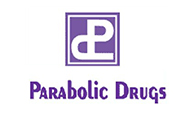Why should anyone use a laminar flow system?
The Basic reason, of course, is to make available source of air from which most of the particulate matter has been removed, as a matter of fact 99.99% of everything air-borne down to 0.3 microns should be screened out. Now you have an environment whose
air supply is free of bacteria, fungi, pollen, and practically all air-borne dirt, to use for whatever purpose such an environment will do the most good.
What actually a laminar air flow system?
A Laminar air flow systems contains three basic elements - a blower, a hgh efficiency air filter, and a plenum. There may be variations on this idea - many blowers, many filters, and very large plenums, but all have the same basics. The flow is called
laminar because the tyrbulent air upstream is chenaged by the filter into a straight-line flow off the downstream face of the filter.
How are the High-efficiency particulate air (HEPA filters) tested?
How The HEPA filters are tested by the DOP-dioctylphthalate-method when manufactured. DOP, a liquid plasticizer is heated to the point of vapourization and reconstituted into 0.3 micron particles to form a monodisperse aerosol. These single size particlesa
re diluted wit air until a concentration of 100 micrograms per litre is reached, and the aerosol-air mixtureis passed through the filter. The amount of penetration is measured on the downstream side with a forward light scattering
photometer, giving the familiar readings of 0,03% or better, The material used to make the filter materail is tested in the same way by hte filter material manufacturer.
Is this in-place filter test the same one as the filter manufacturer uses?
NO, but it is based on the same principle. The photometer is the same, but the DOP is generated by air. This is done by using a special Laskin nozzle which creates an aerosol when it is immersed in DOP liquid and air passed through it. This aerosol, unlike
that used to test the filters at time of manufacture, is not a monodisperse 0.3 micron cloud, but is polydispersed, ranging from 0.32 microns to 1 microns, averaging approximatly 0.45 microns. It is also possible tocreate a simillar
polydisperse aerosol by heat atmosphere by purging with an inert gas such as nitrogen 0r argon. The concentration of DOP so obtained will be very high, and can be used for testing air streams 5,000 to 50,000 CFM
What is the procedure for in-place test?
Actually, it is rather simple. A DOP generator introduces aerosol as a challenge agent into the upstream side fo the filter system. A sample of this aerosol-air mixture is taken on the upstream side of the filter with a linear forward light scattering
photometer for use as a baseline to compare the downstream readings. since the upstream concentration is known, and the photometer is linear, the downstream samples may be read out in percent of concentration, as recommended in
the standrds and specifications. Any leak greater than 0.01% of the upstream concentration is too much, and tyhe spot should be marked for repairs in actuality, there should be no leaks around the filter seals, and in practice,
readings at the face of the filter are usually in the 0.004% to 0.008% range.
What does percent of penetration mean?
It is the amount of challenge aerosol, detected on the downstream side of a filter by a linear photometer, measured against the concentration of challenge aerosol on the upstream side of the filter. with a base of 100% for the upstream concentraion, and
a reading of 0.01% penetration on the downstream side, the indication is that the filter is 99.99% efficient with respect to that particular concentration.
Why was 0.01% established as a significant?
Why Studies were made of the effects of different size leaks on typical types of work such as photoresist, microwelds, sterile transfers, and the like where it was shown that a leak of 0.01% was border at which reject rates began to increase and excessive
contamination was detected.
Why can't the leak test be run with ambient air within a room?
Because there usually isn't enough particulate matter in the ambient to be used as a challenge. The minimum specified by AACC-2T is 3x10 power 5 particles of plus 0.5 microns.
If plates to obtain bacterial counts are used, must the in-place test still be run?
If Yes, because as in the answer above, the amount of bacteria in the ambinet will vary from time to time and give arroneous data. Besides , the test should be run to eliminate any possible leaks greater than 0.001%
Can leaks not be detected by agar plates?
With an LAF situation this becomes chancy when a full scan procedure is adopted. with the stationary procedures both flat on the tables or normal to the air flow, detection is quite nearly impossible
How about impingement devices?
These are certainly effective, but a biologic challenge becomes essential if filter validation is sought. For in -house routine checks this is an approved procedure. For validation this would be both inaccurate and compromising of the sterile work area.
Is DOP aerosol harmful to the filters?
No! Not if used properly. Tests were run on a HEPA filter backed up with charcoal filter, exposing the unit to 100 micrograms per litre of DOP for two hours. NO DOP penetration could be detected. Clean air was blown through the system for another hour
and then the charcoal was analyzed for traces of DOP. The result was zero.
What happens to the DOP once it is in the system?
The DOP particles, being a liquid aerosol, impinge on the surfaces of the glass fibres making up the filter, and are trapped there, Each tiny droplet spreads out to form a mono-molecular layer on the surface, and since the surface area is extremly large,
there is little chance of saturation. it would take an extremly high concentraation of DOP, generated very close to the filter surface, to cause wetting out. Once the DOP is trapped, it stays on the fibres and is not released
When DOP is used to test a system, does the room have to be wiped down?
No, since a comparatively small amount of DOP is released into the clean area, and most of this is swept out in th e air stream. some amy impinge on room surfaces, but his amount is negligible since the aprticles are so small they are subject to Brownian
movement an remain suspended until they are finally trapped by the filter material.
Has DOP test been accepted by the pharmaceutical industry?
If the number of pharmaceutical houses using the test for their filters is any criterion, the answer is most certainly yes. it is also used by the FDA, and of course by many other facets of industry around the world. For example, every atomic energy commission
in the free world uses DOp and the photometer for in-place filter testing, the U.S navy has a special adaption of the basic test equipment for shipboard use and it would seem by its universal acceptance that any-one with a high-efficiency
air filtration system needs one to insure the integrity of their system.
With reference to Fed. Std. 209b, What is the relationship of the various classes of clean rooms( 100, 10 000, and 100 000 ) to the 0.01% figure?
There is no relationship at all. For example- a clean room with no one in it might be class 100, while the addition of personnel will send it into other higher categories. however, suppose the filters supplying a room were thoroughly checked for leaks,
and all significant leaks were sealed, this room is operating at maximum efficiency with respect to the filters, and since the filters are mechanical in nature, there is nothing the opertor can do to change conditions in this area.
The achievement of a particualr class would relate to the number of air changes per hour as well as the scavenging design of the system.
Can a particle counter not be used to determine the class of the room?
All the particle counter can do is give a reading of the number of particles per cubicfoot at any one point at one time. It doesn't indicate what the particles are, or where they come from. the stepwise checkout of a clean room should be first to run
the DOp test to find the significant leaks and eliminate them. If the subsequent introduction of personnel and equipment causes generation of particaulate matter which may be of concern to the successful operation of the room one
more step to be taken.
A sample of the room air should be taken with a millipore-type filter after which the particles collected may be sized and counted, but and this is the most important- they may
now be identified. This identification will enable the room operator to establish the source of contamination is harmful to the work being done. No particle counter in existence can do this for you. As a matter of fact, to quote
from paragraph 60 Fed, STd, 209a referring to the DOP test," .... in most instances, this type of facility check will be more meaningful than any attempt to amke an actual aprticle count, due to the extremly low particle concentrations
expected, plus the difficulty of taking a representative sample in a laminar air flow stream".
But isn't a particle count important data?
It is useful from the standpoint of routine surveillance. Deviations from action levels established for the facility, if not corrected by routine maintenance procedured, would signal a need for filter validations and we are back to square one -DOP
But, why can't leak test be carried out with a particle counters?
You can, but he bassic function of a particle counter is to count and size particle, usually by sampling at a rather slow rate of 0.1 cfm with LAF, isokinetic sampling would be mandatory. scanning a filter seal in this manner would be a slow process involving
great operator skill, and what is more important the reading obtained would have no relation to the establshed level for a significant.
What are the advantages of the DOP in-place test over attempting a leak test with a particle counter?
To begin with, it is not possible to use DOP with a particle counter-the concentration of aerosol is so high that the counter becomes saturated and jams, requiring a trip to the factory for repairs (except where expensive high volume samples with a diluting
air source, are employed). The DOP test tells the story right away-where the leaks are and how great. There are no time delays for readouts or probe recovery. The readouts relate to filter performance and not to an abstraction.
The last applies to linear photometers only; log scale instruments give only relative results
How often should the DOP in-place test to be run?
Because some high-efficiency air filtration systems are used more than others, there is no standard answer to this question. However, to be on the safe side, it is recommended that after the first complete checkout following installation, a check of the
filter seals be made on a ninety-day basis, with a complete scan of the filters two times a year.
 +91 9320 255 124
+91 9320 255 124
































































































